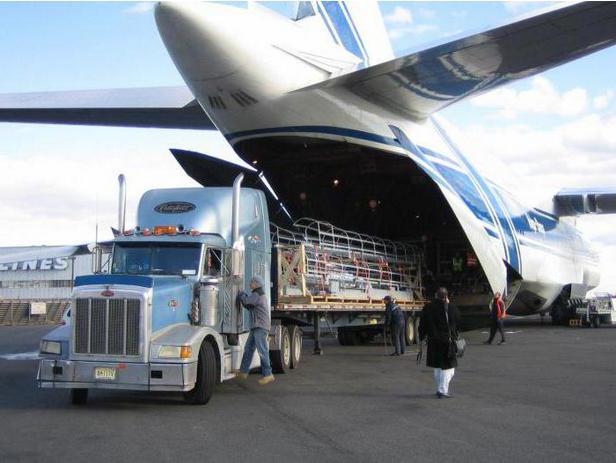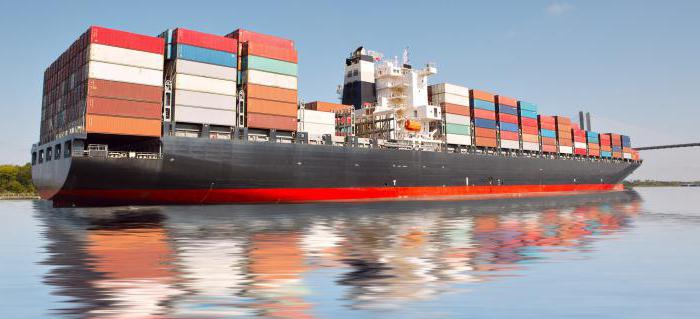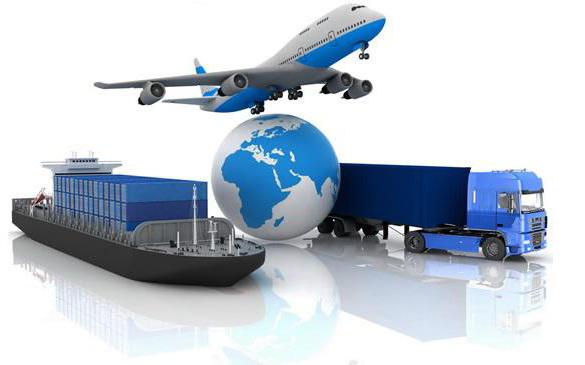When transporting goods in the Russian Federation, you must have an established package of documents. Documents concern both the driver and the cargo itself. The need for an extensive list of documents can be explained by the fact that freight transportation is a special type of mutual relationship between the sender and recipient of goods, which requires documentary confirmation regulated by law. In this article we will understand what transport documents are. 
What should a driver have?
To begin with, consider the list of documents that a vehicle driver must have with him throughout the implementation of the cargo transportation.
This package of documents includes:
- A driver’s license confirming that the driver driving the vehicle has the appropriate qualifications. It is the main type of document not only for the driver engaged in cargo transportation, but also for absolutely any driver.
- Passport identifying the driver. It is not a binding document for a freight carrier, however it is recommended to have it with you. But these are not all driver’s transport documents.
- License to transport a certain cargo. It is necessary if the cargo is transported by a non-standard, specialized vehicle or the cargo is heavy and oversized. This license is issued by the Ministry of Transport of the Russian Federation, a copy of it must be notarized or, in extreme cases, contain the signature and seal of the employer. It contains the following data: name of the organization to which it was issued; OGRN and TIN organizations; location of licensed activity; type of activity permitted by this license; expiration dates. But what is the transport accompanying documents, consider below.
- Vehicle Passport (TCP). Mandatory, especially if the driver is the owner of the vehicle.
- Power of Attorney for shipping. It is advisable to have several copies with you. It is necessary if the driver of the vehicle is an employee.
It is also worth noting that it is desirable (but not necessary) to have a vehicle insurance policy (CTP) (especially when transporting goods abroad) and copies of labor contracts for the driver and forwarder, if any.
What other transport documents are there?
Additional papers
An additional package of documents for the driver, recommended for availability during cargo transportation, includes:
- The ticket for technical inspection of the vehicle on which the cargo is transported.
- Bill of lading (TTN), confirming the validity of the transaction concluded between the sender, recipient and carrier of the goods. The invoice consists of two parts, the first of which reflects information about the goods being transported in each case. The second part of the TTN reflects information about vehicles involved in freight transportation, as well as the route of movement and the time of departure-arrival. What else does transportation require?

- Waybill.It is issued by the accounting department of the consignor if the transportation is carried out on their own; or bookkeeping of a transport company engaged to carry out cargo transportation. The waybill contains the state registration number and type of vehicle; odometer readings before the vehicle starts moving along the route; date when the driver underwent a medical examination; the period during which the waybill is valid; as well as information about the company that issued it. The paper is filled in by the dispatcher, medical professional and technician. Also, the waybill has a tear-off part (coupon), which is subsequently returned to the consignor with the invoice.
- Shipping specification. A standardized accompanying document, usually used for international shipping. It reflects the completeness and quality of the transported goods, and indicating all types of goods included in the party, and its location. The first copy is stored in the customs office, and the other two accompany the goods. Upon completion of transportation under the control of the customs authority, one of them is seized by the customs at the place of arrival, and the second is attached to the cargo declaration.
- When transporting goods within the country, the TORG-10 form, filled out in duplicate by the sender at the stage of picking and packing the goods, can serve as an analog of the specification. One copy is intended for the sender, and the second should be attached to the invoice and delivered to the consignee. If there is a container, its weight should also be reflected in the form of TORG-10. These are the most famous transport documents.
- Contract for the provision of freight services. It is concluded between the sender of the cargo and the transport company, if one is involved in the performance of transportation work. Must have the signature of the driver or forwarder who provides the accompaniment of the goods. The contract is a document confirming the legality of the transport. Copies of the contract are also allowed, but must be certified by the original seals of the company.

Let us consider in more detail the nuances of drawing up an agreement.
Contract of carriage
As already noted, an agreement is concluded between the consignor and the person carrying out licensed freight transport activities. The consignee can be considered a third party, but legally he is not a party to the contract and, therefore, his signature on the contract is not required.
The main condition of this agreement is that it establishes the full responsibility of the freight carrier for the timely delivery of goods along the agreed route, and for the correct loading and unloading of goods, their safety.
Legislatively, the contract of carriage of goods is regulated by the following regulatory acts: Ch. 40 and 40 of the Civil Code of the Russian Federation, Federal Law No. 87 of June 30, 2003, Government Decision No. 554 of September 8, 2006, the Charter of Motor Vehicles, and the Law "On the Rules and Procedure for Carrying Out International Transport" (Federal Law No. 127).
The contract must necessarily reflect directly the subject of the transaction (the provision of services for the carriage of goods), the timing of delivery, the cost of the services provided, the rights and obligations of both parties, and other aspects that, in the opinion of the parties, may matter. 
Copies to the contract
When concluding a contract of carriage, copies of the following documents are attached: 1. On the part of the contractor:
- Constituent documentation of the organization.
- License.
- Documents confirming the ownership of the vehicle (lease, lease or TCP).
- A full package of documents for the driver.
2. On the part of the shipper:
- Constituent documentation.
- A package of documents confirming ownership of the goods, cargo safety, certificates of its compliance with norms and standards.
Based on the material described above, you can pay attention to the fact that the waybill almost duplicates the waybill. Both documents serve as the basis for determining the amount of transport costs of the carrier and the subsequent calculation of the driver’s salary.
If there is a need for a license, it is worth considering that then the driver must have with him an admission certificate and a license card, as well as a contract for the carriage of goods.
Oversized cargo
Transportation of oversized, dangerous or overly heavy cargo is carried out with special permission and a permit. The latter is issued at the traffic police department. You will also need a document proving the driver’s preparation for the transport of dangerous goods, quality and safety certificates for the cargo and its packaging, an emergency card for the hazard information system, a contact list of responsible persons, traffic police departments along the entire route, as well as a special sample waybill marked on the transport of dangerous goods.
Severe weather conditions
It is also worth knowing that it is necessary to coordinate the route of the vehicle with the cargo if the transportation takes place in difficult weather conditions (mountainous terrain, ice, fog). When transporting heavy goods, you will have to pay a state fee, which will allow you to follow public roads.
If the driver carrying the cargo will have with him all the necessary types of transport documents listed above, then there should not be any concern for the cargo transportation, since it fully meets the requirements of the law, and even stopping the vehicle by the traffic police will not entail any unpleasant consequences.
Documents for cargo
Along with the package of documents for the driver, an important factor is the availability of accompanying documentation for the transported cargo.
As a rule, when transporting goods, you need to have with you only a certificate that confirms the proper quality of the cargo. The driver must obtain this certificate from the consignor.
If the cargo includes goods with short shelf life related to specific types of cargo (such as meat, fish or other food products), then the availability of an appropriate package of documents for the goods is also mandatory. An example is the temperature book and the accompanying leaflet, which contains information about the temperature readings of the refrigerator during the whole time of transportation of goods.
What else is included in the standard documentation?
Cargo transportation of absolutely any type of food is necessarily carried out with a sanitary passport. The presence of a veterinary passport is required when transporting animals, both wild and domestic.
The main supporting document for cargo transportation is the bill of lading, specifically the second part of the TTN, which displays information about the cargo being transported, including who the consignor and consignee are, information about the product, type of transaction - sale or purchase of goods, or other . Absolutely all columns of the bill of lading are required to be legible and easy to read in handwriting, if any information is missing, there should be dashes.
Design features of TTN
It is necessary to draw up a waybill in four copies. The first copy is for the sender of the goods (confirmation of the write-off of the goods from the warehouse), the second is intended for the consignee, the other two are accepted for accounting in the accounting department of the transport company that carried out the cargo transportation. All copies of the consignment notes must be certified by the seals and signatures of the consignor and the driver.
If the consignor delivers the goods on his own, without involving a transport company, then a simple invoice attached to the goods will be sufficient. Similarly, when purchasing and transporting goods directly by the buyer himself, the registration of the bill of lading is optional. A sufficient confirmation may also be a usual consignment note confirming the fact of sale.
If there are several recipients of the goods, then the invoice must be issued separately for each person and for each individual consignment of goods. This invoice is the basis for the cancellation and acceptance of goods at the recipient's warehouse. 
Documentation flaws
The carrier has the right to refuse to transport the goods if they have discovered any deficiencies in the preparation of accompanying documentation, a violation of the integrity of the package of goods or other defects in the goods. Discovered violations must be documented and reflected in a separate document called an act of disagreement. The act fixes the fact of disagreement between the consignor and the transport company and is aimed at protecting the driver’s rights, since if the recipient refuses to accept the goods for one reason or another, transportation will be interrupted. In this case, the fault lies entirely with the transport company and the driver.
Transportation of goods, both on the territory of the Russian Federation and on the territory of any other state, is a rather complicated procedure and has many nuances. If you do not take into account all the necessary information, you can significantly complicate the process. Indeed, the absence of even one or two necessary documents from either side (the sender or the carrier) may result in a fine for a motor vehicle, and the consignee, in turn, has every right to refuse to accept the goods.
International transport documents
For international transport you need:
- Bill of lading. Required for shipping by sea.
- CMR waybill - for international road transport.
- Bill of lading - needed for the carriage of goods by an outside organization.
- TIR Carnet - for simplified customs inspection.
- Karnet ATA. It is an international customs document. Replaces the customs declaration, with it you do not need to pay a fee.
Conclusion
The key to successful cargo transportation is the timely and accurate execution of all necessary supporting documentation. This important factor will allow to avoid unpleasant surprises along the way, mistakes, unforeseen expenses; Allows you to maintain partnerships with customers and a good reputation in the future. We reviewed the list of transport documents.
